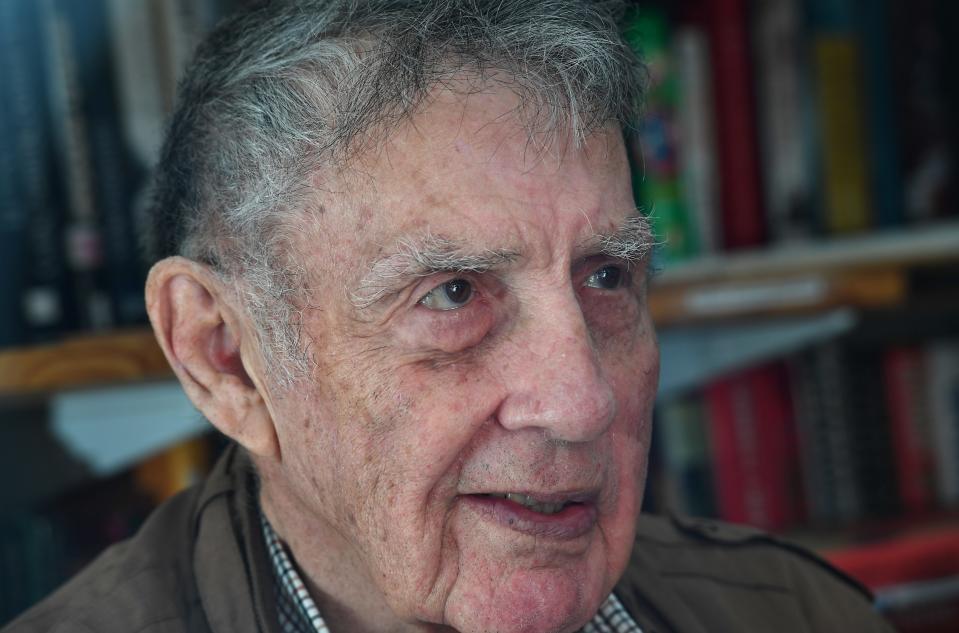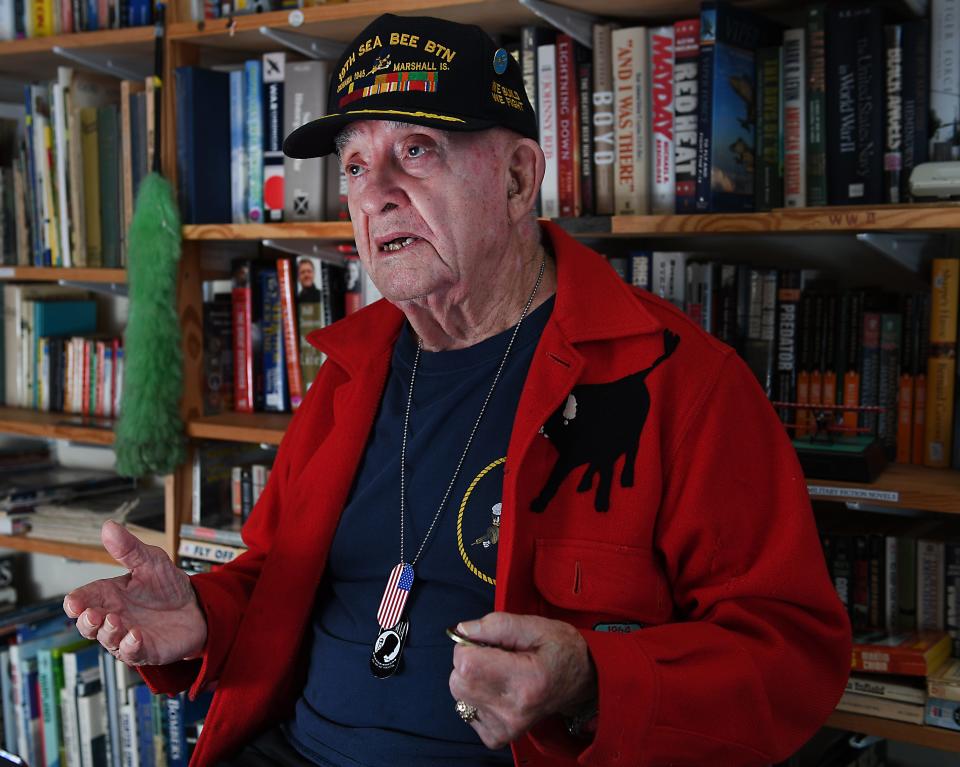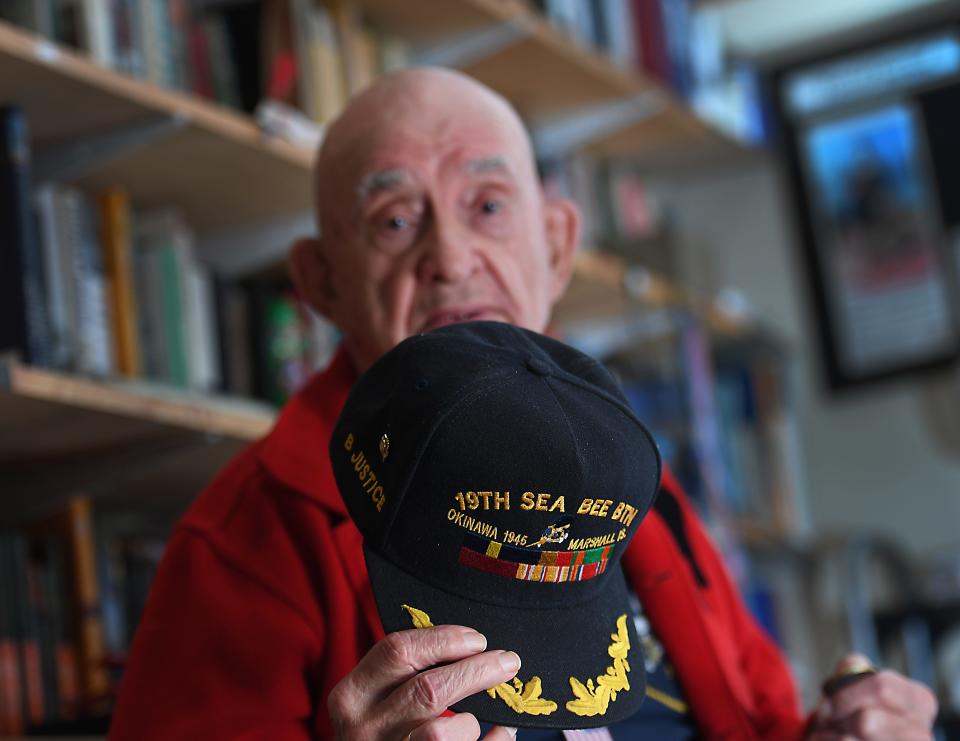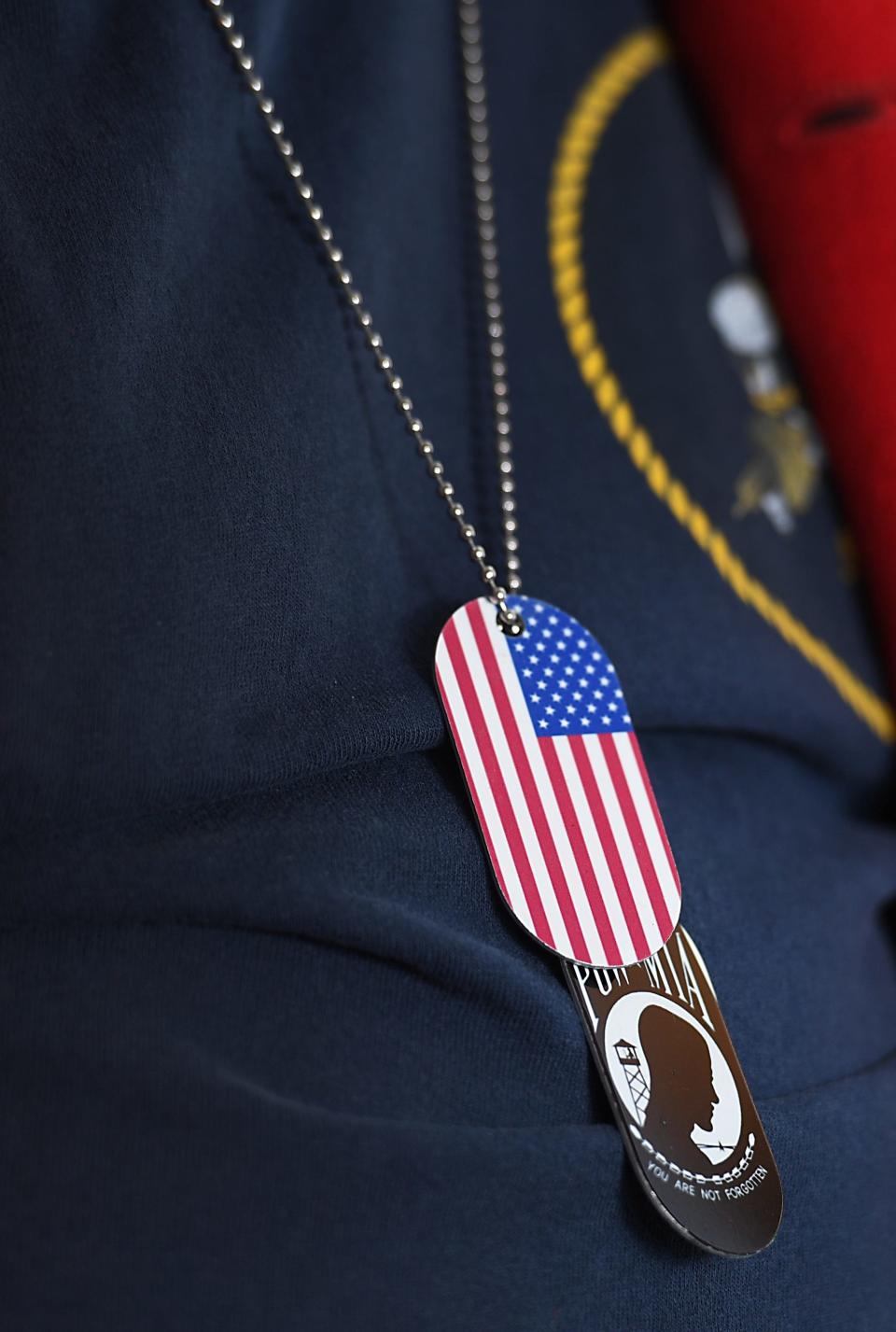'You just feel like you can whip the world': Spartanburg veterans reflect on World War II
Stanley Moore of Spartanburg was only 17 years old when he enlisted with the Marines in World War II.
He was assigned to the 3rd Marines Division and fought in the Battle of Iwo Jima. After Japan's surrender, he continued to serve in China and Vietnam before retiring as a master sergeant after 22 years in the military.
"It was pretty bad most of the time (Iwo Jima), and I've seen the movies about it," said Moore, who is 95. "It was worse than the movies. I don't know why I wanted to be a Marine, it was a tough outfit. I paid a lady in a bar $5 to pretend to be my mother, but I got everything straightened out before I retired."
Moore said one of his favorite moments was seeing the American flag being raised while in Iwo Jima. Winning the battle paved the way for the last and largest battle in the Pacific: The invasion of Okinawa, according to the National World War II Museum. It also was considered one of the bloodiest battles in Marine Corps history.
"I was stationed on Maui and I thought I was going home (when the war ended)," Moore said "But everything was based on points, and they sent me to China in another outfit."

Seeing the ocean for the first time was one of Moore's greatest experiences, and he still has memories of exploring the world with his new friends.
"What I like about being a Marine was sure not the pay," Moore said jokingly. "I kept in touch with them [his friends] until they died. We kept in touch even after we got married and our wives became friends. I had never seen the ocean before, and now I've been on six continents, 30 countries and lots of islands."

WWII veteran celebrates 100th birthday:New Mexico WWII veteran celebrates 100th birthday. He only expected to make it to 'maybe 70, 75.'
At 20 years old, Moore finally returned home after serving in China. Throughout everything, Moore said he would do it again if it meant keeping his country safe.
"I wanted to be a part of it and I would do it again," Moore said. "But I wouldn't go through Iwo Jima again."
Robert Justice recalls conditions during Guadalcanal Campaign
"We took our first wave of boys in the Guadalcanal and didn't have any equipment," said Robert Justice, 96, who served in the U.S. Navy 19th Seabees.
Justice enlisted in World War II when he finished his junior year of high school and fought in the attack on Pearl Harbor. He grew up on a farm in West Virginia and could handle operating heavy equipment.

"Due to my experience in equipment, they put me as a bulldozer operator," Justice said. "We built airstrips, roads, docks and whatever they wanted."
Justice said his early years as an Eagle Scout helped save his life during the hot and humid conditions in the Pacific. Tropical diseases, like malaria, were also rampant.
"It was extremely hot on the islands, but my boy scouting taught me to put five drops of iodine in my canteen," Justice said. "It would taste awful, but it saved my life. We lost a lot of men because they didn't use their netting for mosquitos."
Iodine helps with hydration, according to a website by Harvard University's Department of Public Health.

Joining the military felt natural to Justice. It was something he was prepared for, coincidentally, by his Boy Scout training. Justice didn't fear what was to come while serving his country.
"Every once in a while I'd get a letter from my mother, that would be wet or sandy," Justice said. "It would say 'Son, I'm worried about you and I pray for you,' and I'd think that's nice, but what is there to worry about? In the military, they train you to not fear anything. You just feel like you can whip the world. That's how we won the war."
Justice said his lasting memory is coming home to his family and spending time with his Boy Scout troop.
World War II:When was World War II? The deadliest international conflict explained

"I came home in January of 1945, and it was easy for me to wound down cause I started to plow for my dad, running his old tractor," Justice laughed. "I asked my mama if she had my feather bed ready, and she said, 'It sure is, it's been ready for a long time.' I took my Boy Scout troop to camp, and during the summer months, I would take them swimming to get their life-saving merit badge. That's how I wound down from all the trauma puddling through. I've had a good life and I thank the good Lord every day."
Sgt. George B. Walker laid to rest in Spartanburg
It was a bittersweet day for the Walker family as their relative, Staff Sgt. George B. Walker was finally laid to rest at Greenlawn Memorial Gardens on Sept. 10 in Spartanburg.
Walker was assigned to the 369 Bombardment Squadron, 306 Bombardment Group and 8th Air Force in the winter of 1944. On Feb. 3, Walker was assigned the role of engineer and turret gunner on the B-17G Flying Fortress bomber.
He was a part of the large bombing mission against the Wilhelmshaven Naval Shipyard in Wilhelmshaven, Germany, which came under fire when they entered Oldenburg. Walker landed his aircraft in the water as American soldiers attempted to escape, but German soldiers managed to capture several crew members including Walker.
On April 28, 1944, Walker was shot and killed as a prisoner of war at the camp in Heydekrug, Germany, after an attempt to escape. He was one of three Americans who had died at the camp. Walker was 25 when he died.
In 2019, the Defense POW/MIA Accounting Agency (DPAA) partnered with Ohio Valley Archeology, Inc. (OVAI) to investigate and possibly find the three gravesites of the captured American soldiers. The gravesites were discovered in August 2021. The DPAA Laboratory was able to identify Walker with dental and DNA samples given by family members.
Walker's remains were brought home and buried. Family members greeted each other and shared stories after the service. Even though they had never met Walker, relatives shared his legacy through stories and artifacts.
Fletcher Walker is Staff Sgt. Walker's nephew and said his father was lucky enough to avoid the war.
"They drafted my father, but it was toward the end of the war," Fletcher said. "He was going to report to the draft board, but all heck broke loose. It was the day the war ended. There were bugles and horns, you would never believe that many people celebrating in the street."
This article originally appeared on Herald-Journal: Spartanburg veterans reflect on World War II battles

